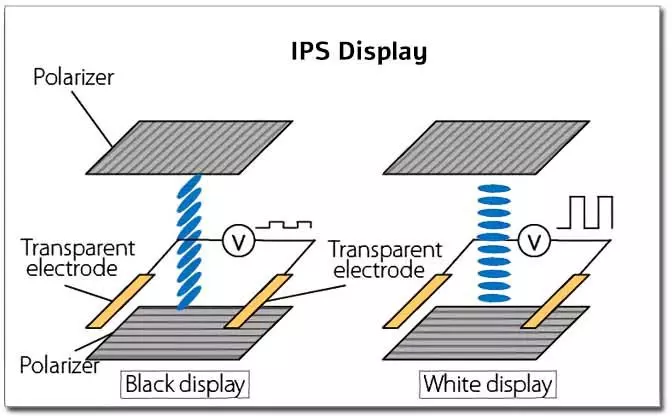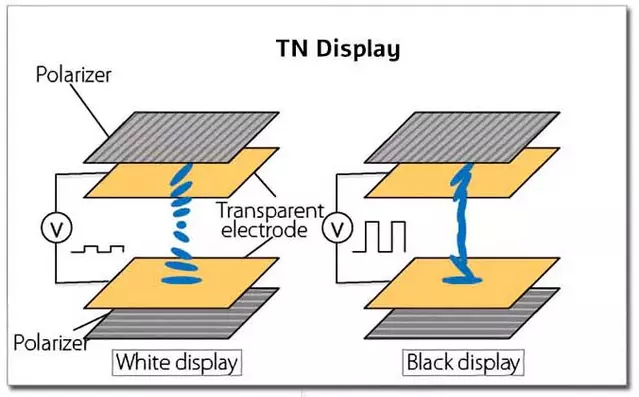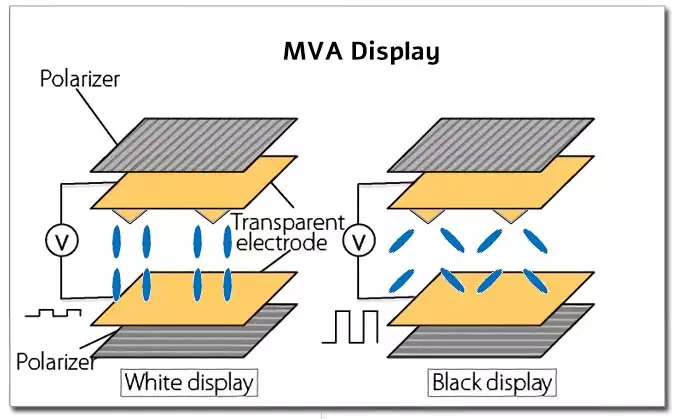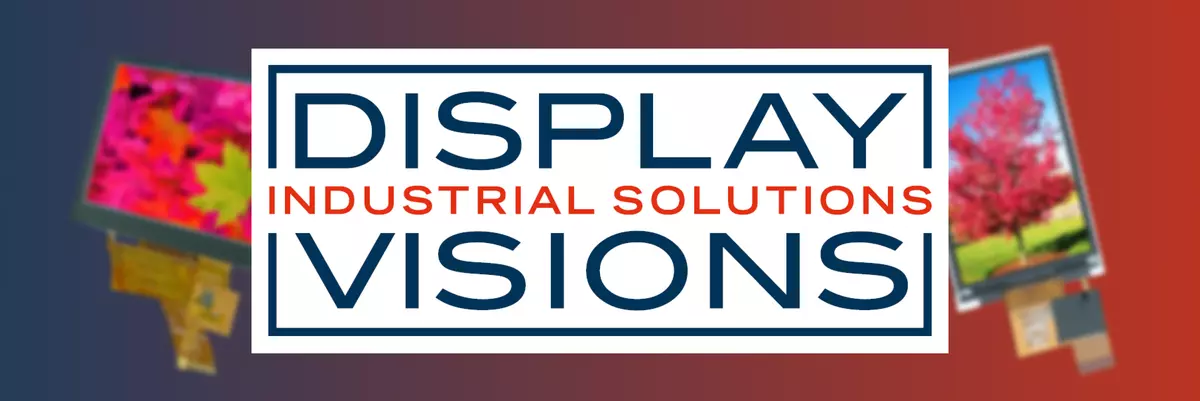The different technologies IPS - TFT - TN - VA - MVA
Summary
Let's start with a brief summary for readers in a hurry. IPS technology is currently the best LCD technology for colour displays because it combines many advantages over the classic TFT display: stable colours and a very wide viewing angle (80-85° in all 4 directions). Nevertheless, an MVA display is a tad faster and cheaper. However, both beat the original TFT technology.
IPS vs. TFT / Comparison, advantages and disadvantages or differences
An IPS display is actually also a TFT display. "TFT" stands for "thin-film transistor", i.e. transistors are applied directly to the glass (panel) as drivers for each pixel. This was also the case with the first TFT displays and the new IPS displays also have an identical structure. The difference, and therefore also the technical features, lies in the structure of the cell. "IPS" stands for "In-Plane-Switching". IPS technology produces a contrast that is virtually independent of the viewing angle. So regardless of whether you look directly at the display from the front or rather from the left or above, the contrast remains constant. This means that IPS displays are easy to read from all sides. Displays in IPS achieve a viewing angle of up to 85° in all four directions (from below, above, right and left) compared to 45° to 55° for classic TN cells (TFT displays). So which is better, IPS or TFT? Clearly IPS.
IPS displays, like TFT and MVA displays, are liquid crystal displays (LCD).

TFT vs. MVA / Comparison, advantages and disadvantages or differences
In MVA cells (or MVA displays), the crystals are orientated vertically instead of horizontally. When a voltage is applied, they rotate horizontally. This results in very good contrast, better than TFT displays (with TN cells, see above) and even better than IPS. However, the response times are very high, which makes the display correspondingly slow. This is not a problem for static content in industry, but if moving images or frequent image changes are required, MVA displays show ugly stripes and streaks.
Mechanical pressure on the pane of an MVA or PVA display leaves clear marks, so this technology is very sensitive to pressure. Although the effect is usually reversible, it can also lead to permanent damage.
There are also various subgroups, usually further developments of individual manufacturers, such as VA, MVA, PVA, P-MVA and S-PVA. "VA" generally stands for "vertical alignment".
However, none of these technologies come close to the viewing angle of an IPS display or the response time of a TN panel or IPS panel. However, they are usually cheaper to produce, at least in very large quantities. So which is better, TFT or MVA? Clearly MVA.

MVA vs. IPS / comparison, advantages and disadvantages or differences
In MVA cells (or MVA displays), the crystals are orientated vertically instead of horizontally as in IPS displays. When a voltage is applied, they simultaneously tilt by a certain angle. This results in similarly good black levels as with IPS, sometimes even slightly better.
A major disadvantage is that the tilting is relatively slow compared to the rotation of the crystals in IPS displays. This makes the displays unsuitable for displaying fast-moving images.
The contrast values of IPS and MVA are similar, but mechanical pressure on the pane of an MVA or PVA display leaves clear marks. Although the effect is usually reversible, it can also lead to permanent damage. A clear disadvantage compared to IPS displays.
Overall, IPS technology performs better because colour stability with a wide viewing angle meets high display speed. Even if MVA technology is usually cheaper to produce, at least in very large quantities. So which is better, IPS or MVA? Clearly IPS.

TFT (TN): strengths and weaknesses
| Advantage | Disadvantage |
| affordable | weak contrast |
| fast | small viewing ange |
| grayinversion effect |
In TN displays, the crystals are rotated like screws under tension. This always lets some light through, so that good black levels are not possible. TN panels shine above all with their short response time. They are therefore well suited for fast-moving images such as those found in gaming. The picture remains sharp, but if it still stutters, it's not the display's fault but the graphics card or the internet.
The viewing angle is quite good compared to monochrome displays, but there are significantly better display types with IPS technology.
A tilt effect, the so-called gray inversion effect, can be unpleasant when viewed from the side: a sudden inversion of the colors with a simultaneous loss of contrast.
Diese Display-Technologie kann uneingeschränkt auch mit einem Touchpanel kombiniert werden.
MVA (VA): strengths and weaknesses
| Advantage | Disadvantage |
| affordable | slow |
| contrast | reduced viewing angle |
| sensitive |
Thanks to the vertically aligned crystals, MVA technology offers very good contrast and a wide viewing angle. At the same time, however, this comes at the price of pressure sensitivity, also triggered by mechanical stresses during operation. The black levels are very good and sometimes even exceed those of an IPS panel.
A major disadvantage is the inertia of MVA and PVA displays. This quickly shows its limitations in the consumer industry, even if the prices for MVA panels are temptingly low.
The viewing angle is reasonably good compared to TFT, but does not come close to that of IPS displays. This becomes critical when several people want to look at the display at the same time.
This display technology can also be equipped with a touch panel without restrictions.
IPS: strengths and weaknesses
| Advantage | Disadvanatge |
| color truth | expensive |
| contrast | energy consumption |
| viewing angle | slightly slower |
The in-plane switching of IPS displays enables very good contrast and a wide viewing angle. Another significant advantage in some applications is the stable color reproduction regardless of the viewing angle. The black levels are very good and are only surpassed by individual MVA panels.
Because the transmissivity of IPS displays is lower than that of TN and MVA displays, brighter lighting is required. This is associated with higher power consumption or poorer readability, especially in sunlight.
However, the wide viewing angle of IPS panels together with the color stability are convincing in most applications.
This display technology can also be equipped with a touch panel without restriction.
© Dipl. Ing. Ralph Tischer - 12.2023
Further links
Here you will find IPS displays without and IPS displays with intelligence.
Wikipedia on IPS displays.
Resistive and capacitive touch panels.


